GESHA | Peru | Washed
GESHA | Peru | Washed
Couldn't load pickup availability
Gesha is to coffee what a cashew is to nuts; a lower yielding, less hardy, more difficult product to harvest, in high demand and absolutely delicious.
We aim to keep as close to a 'classic' Gesha profile as we can; clean, fruity, light, floral & sweet, however we also like to offer something that is less 'classic' either by region, process or producer.
Micro batch roasted to order, on London’s Brick Lane, using the world’s lowest carbon emitting roaster.
ORIGIN: Peru
REGION: Agua Azul, Chontali, Cajamarca
PRODUCER: Single estate, Finca Los Quispe
VARIETAL: Gesha
PROCESS: Washed
ELEVATION: 2050 masl
Share

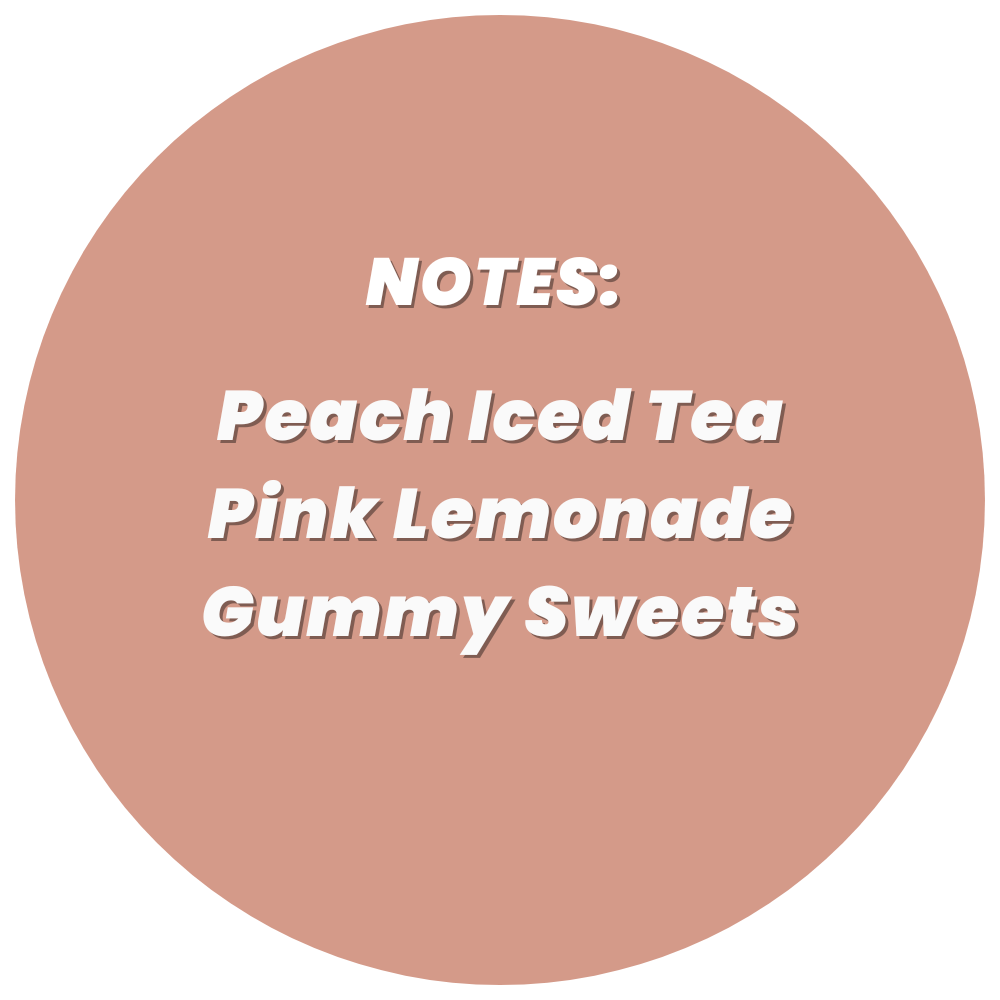
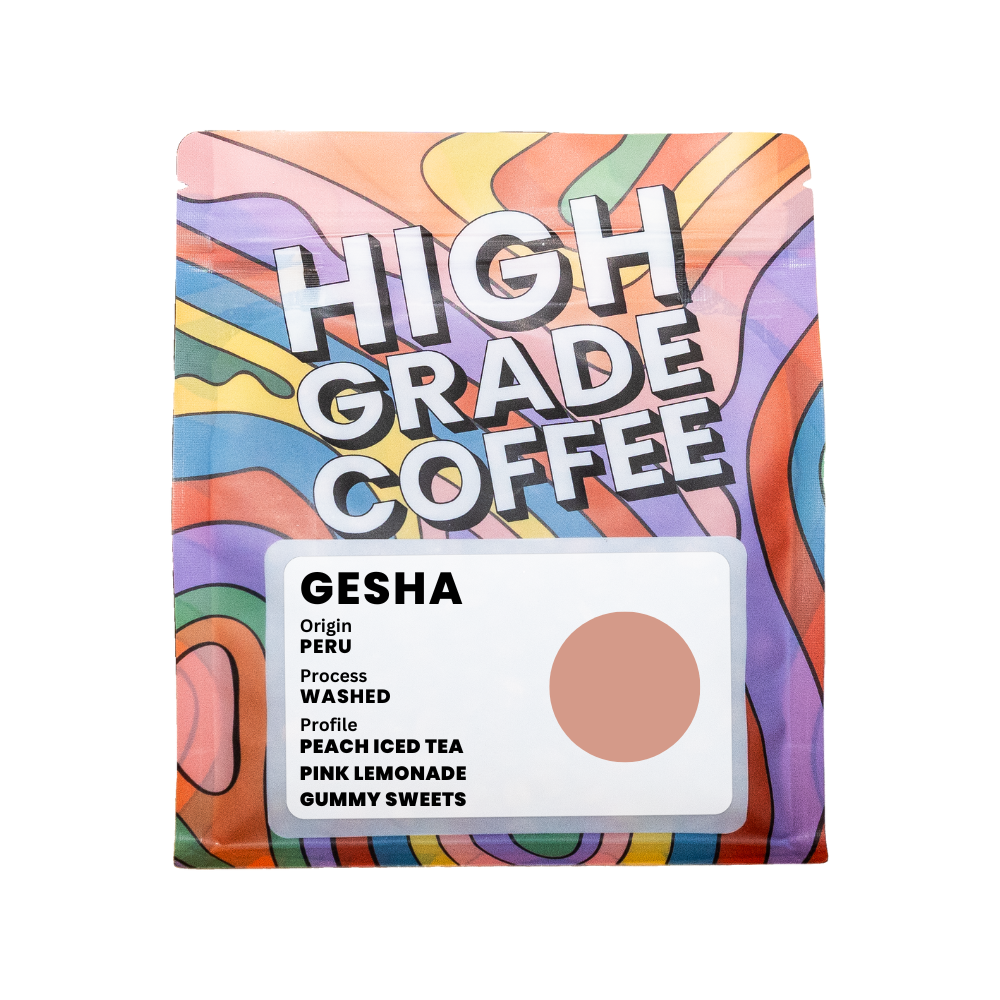
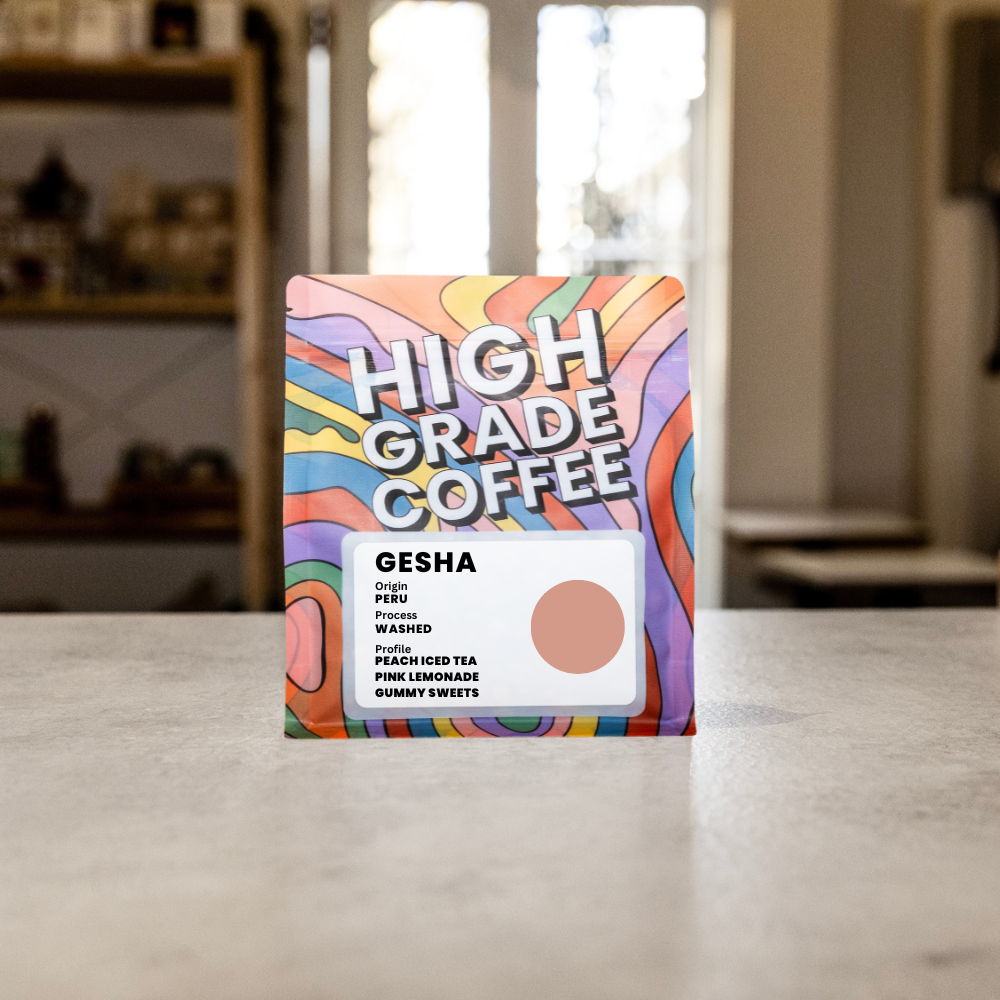
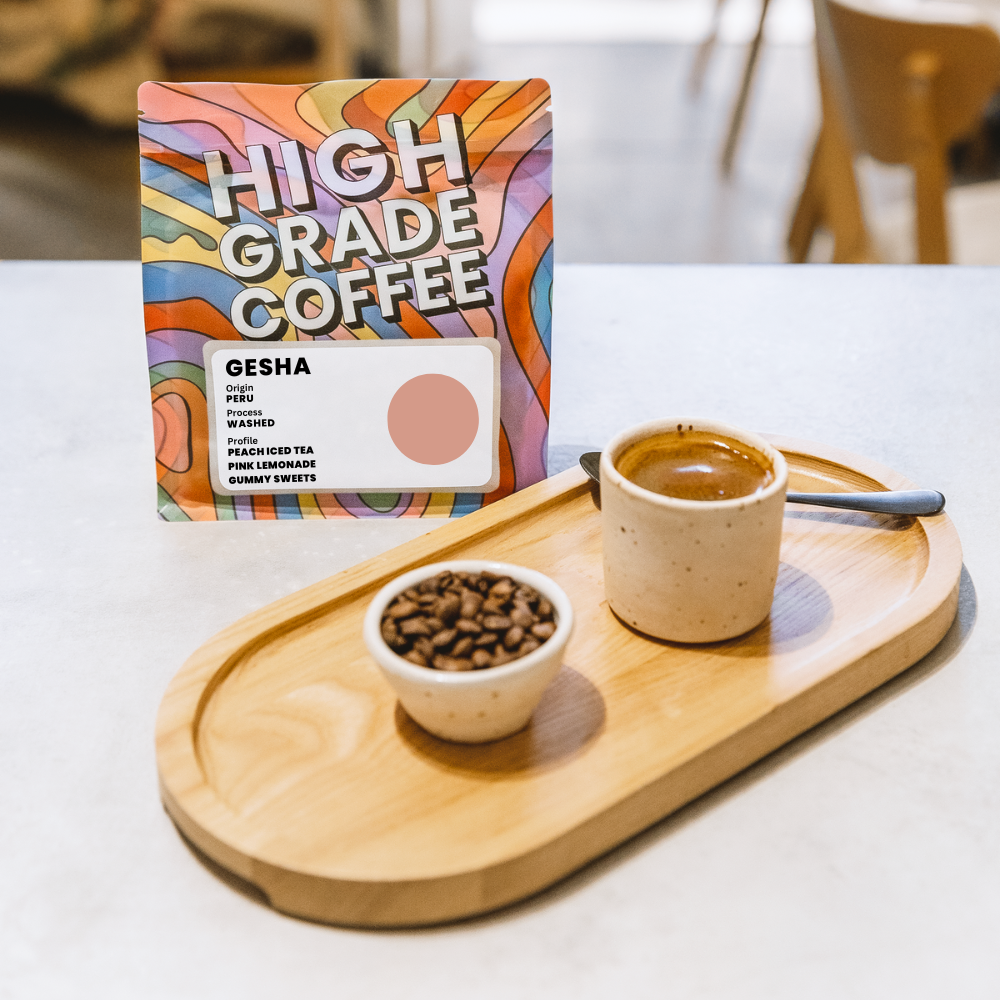
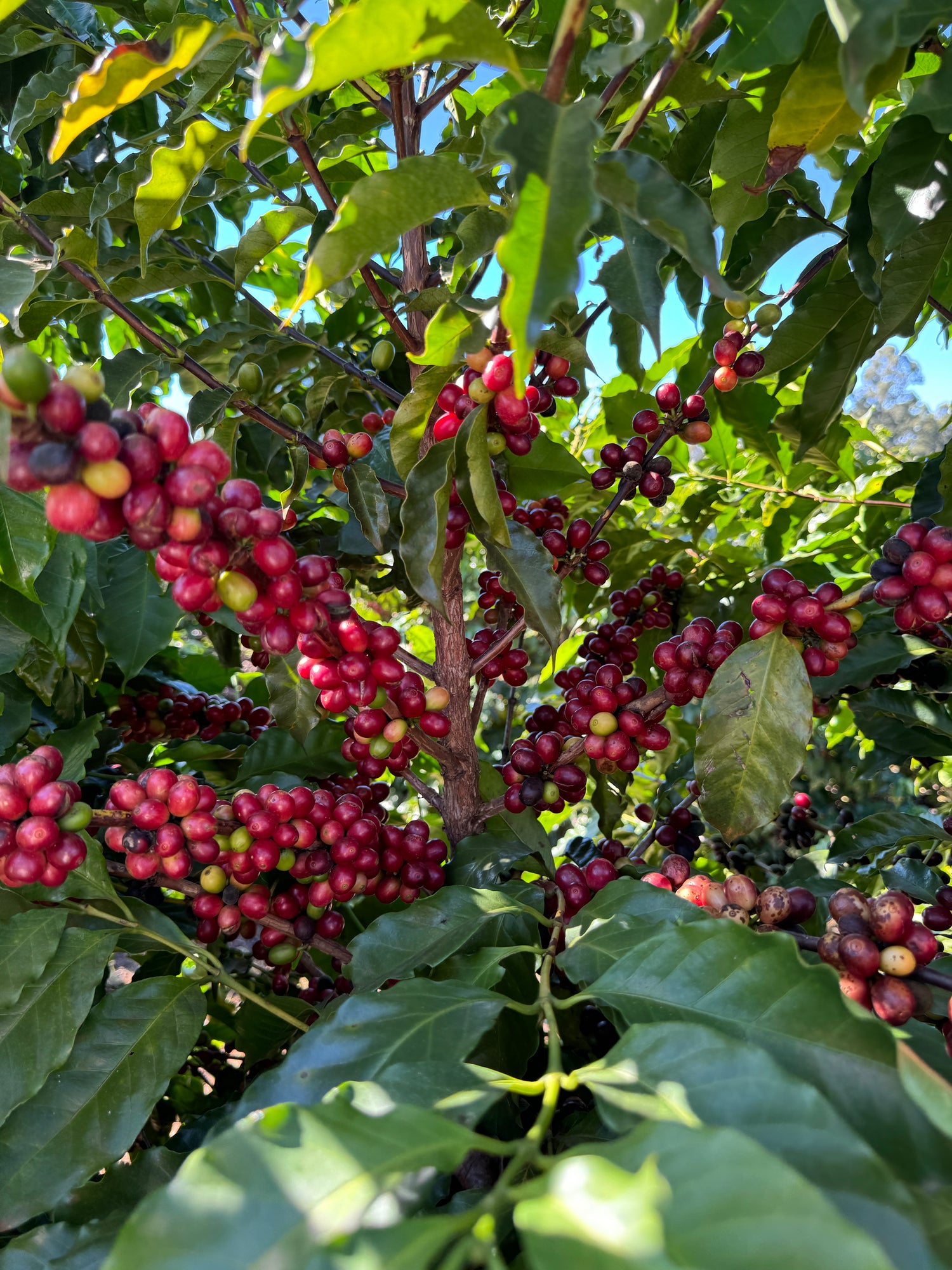
a bit about the bean
Gesha/Geisha
First things first; Gesha is a both a coffee varietal, and a region in South Western Ethiopia. The term Geisha refers to anything that is a Gesha varietal, grown outside of that region. Think: Champagne.
Gesha is almost always handpicked, thoughtfully and more meticulously processed, and due to it's pleasing flavour profile is also highly sought after, couple that with a varietal that inherently produces less fruit and needs ideal growing conditions, and you've got a unicorn coffee.
Most commonly Gesha will have a profile of jasmine, bergamot, black tea, tropical fruits, berries and is delicately sweet, varying processing methods such as natural and honey, can affect the outcome of flavours, producing more complex or aromatic notes, or the washed process which enhances the classic profile even further.
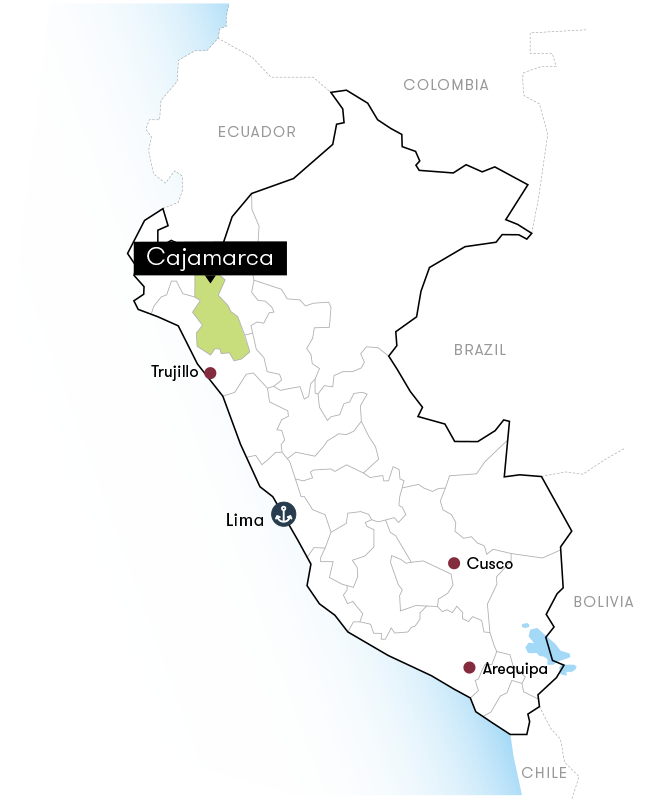
a bit about the region
Peruvian coffee
Queromarca is one of the pioneering areas for coffee production in the district of Callayuc. Situated at an elevation of over 2,000 meters above sea level, the region leverages its diverse microclimates to produce exceptional specialty coffees.
Callayuc, a district in the Cutervo province of Cajamarca in northern Peru, is characterized by its lush tropical jungle, rich biodiversity, and fertile valleys.
The district's ranging altitudes, create ideal conditions for a variety of agricultural activities, and it's unique geography supports a vast array of flora and fauna. It's local farmers cultivate permanent crops, including coffee, alongside natural forests, making Callayuc a significant contributor to Peru’s coffee landscape.
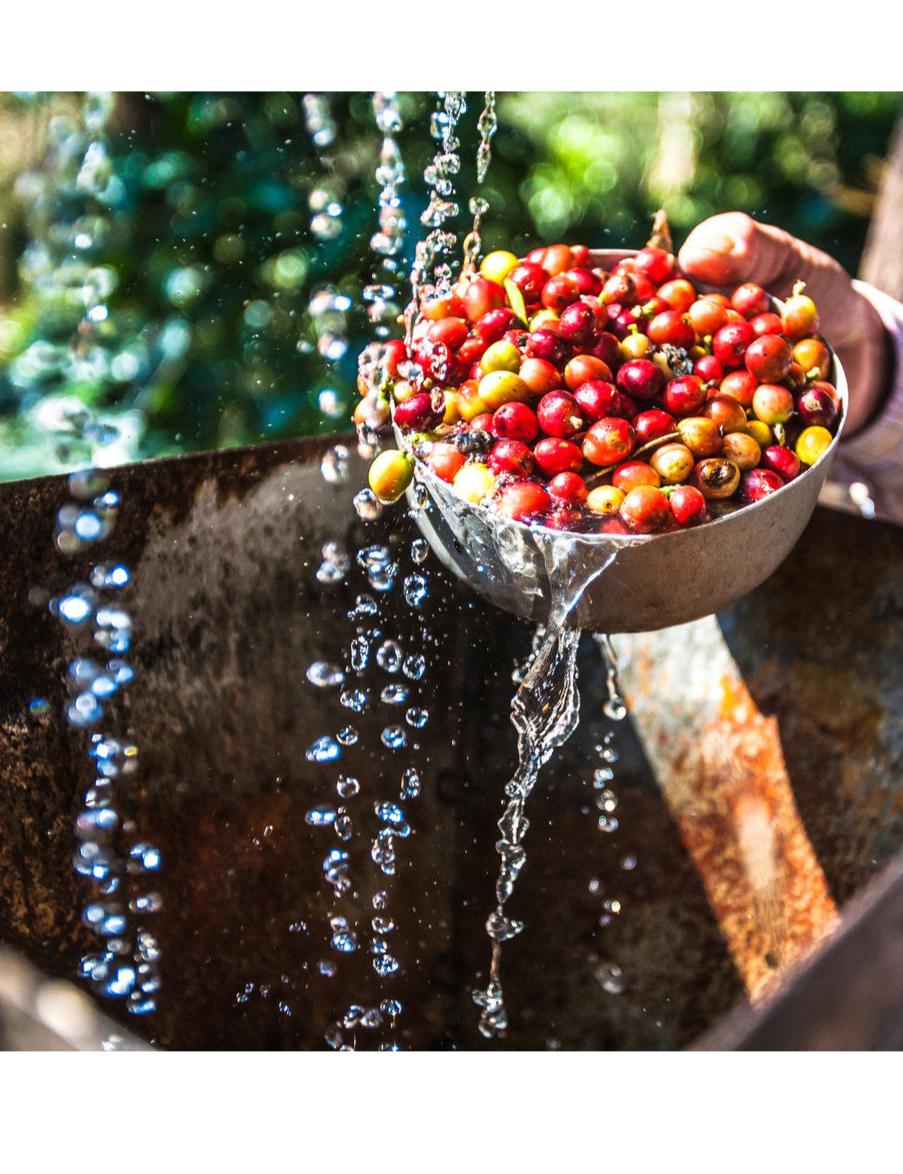
a bit about the process
Washed
The washed processing method, is a common coffee processing technique that involves removing the pulp and mucilage from the coffee cherries before drying. This method generally produces a cleaner, more acidic flavour profile.
Harvest: Ripe coffee cherries are picked from the trees and immediately taken for processing.
Depulping: The cherries are passed through a pulping machine to remove the outer skin and pulp.
Fermentation: The de-pulped beans, still covered in a layer of mucilage, are placed in fermentation tanks. This process breaks down the remaining mucilage, which can contribute to the flavor of the coffee. The length of fermentation can vary depending on factors like temperature, humidity, and desired flavor profile.
Washing: After fermentation, the beans are washed to remove any remaining mucilage. This step is crucial to ensure a clean cup of coffee without any off-flavors.
Drying: The washed beans are spread out on raised beds or drying machines to dry. Drying is a critical step to remove moisture from the beans and prevent spoilage. The drying time can vary depending on factors like weather conditions and desired moisture content.
Hulling: Once the beans are dry, they are hulled to remove the parchment layer. The parchment layer is a thin, papery skin that protects the bean.
Grading: The hulled beans are sorted based on size and quality. This step helps to ensure that the coffee is consistent in terms of flavour and appearance. During specialty processing, more time is taken or indeed repeated to ensure a more refined product.
Washed coffee is a popular choice among coffee professionals due to its ability to produce high quality coffee with a cleaner flavour profile.
However, the choice between washed and other processing methods ultimately depends on the desired flavour characteristics and the specific conditions, terroir or equipment available at origin.





